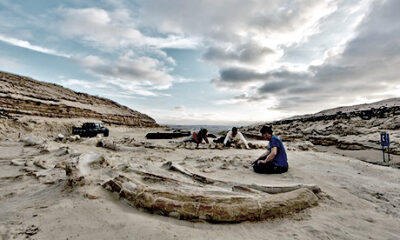
Fossils are the only direct physical evidence of what lived on Earth at a moment in time. The collective of fossilized remains and imprints is known as the fossil record. The fossil record is evidence of life’s history on Earth.
The fossil record is the result of a fossilization process. This process begins with minerals quickly seeping into organic materials from surrounding aqueous sediments, followed by the removal of water.
Fossilization preserves the specimen. Fossilization, long considered a replacement process, is now challenged by the emergence of new technologies. Researchers are increasingly reporting exquisitely preserved cellular and molecular details in fossilized specimens.
Like archaeology, geology, astronomy, and cosmology, paleontology is a historical science that studies the fossil record. Paleontology lies on the border between biology and geology, drawing from biochemistry, mathematics, and engineering.
Paleontologists use the fossil record to classify organisms and explore classification patterns to validate the evolution theory scientifically.
Fossil Record
Charles Darwin (pictured right) predicted the Earth’s fossil record to play like the successive frames in a movie to unveil his beautiful “tree of life” – in theory. The fossil record became the litmus test for his theory. Darwin explains –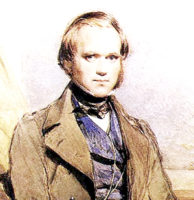
“If it could be demonstrated that any complex organ exists which could not possibly have been formed by numerous, successive, slight modifications, my theory would absolutely break down.”
The fossil record, however, never lived up to Darwin’s expectations in his lifetime. In the words of evolutionist Stephen J Gould, the fossil record “caused Darwin more grief than joy.” Evidence for Darwin’s fossil record realm of evolution has only continued as an increasing dilemma. During his lifetime Darwin acknowledged his fossil record dilemma –
“We do not find infinitely numerous fine transitional forms closely joining them all together.”
In addressing his now vexing dilemma, Darwin simply argued that “only a small portion of the surface of the earth has been geologically explored.” Once the earth had been explored and the missing transitional links discovered, Darwin expected his dilemma to vanish.
Without “numerous, successive, slight modifications,” referred to as transitional links or intermediate forms, Darwin argued that the fossil record would become “the most obvious and serious objection which can be urged against my theory.” In The Origin of Species, Darwin openly discussed his growing fossil record dilemma –![]()
“The noble science of geology loses glory from the extreme imperfection of the record. The crust of the Earth, with its embedded remains, must not be looked at as a well-filled museum, but as a poor collection made at hazard and at rare intervals.”
“In the sixth chapter, I enumerated the chief objections which might be justly urged against the views maintained in this volume. Most of them have now been discussed. One, namely, the distinctness of specific forms and their not being blended together by innumerable transitional links, is a very obvious difficulty.”
“If numerous species, belonging to the same genera or families, have really started into life at once, the fact would be fatal to the theory of evolution through natural selection.”
“Although geological research has undoubtedly revealed the former existence of many links, bringing numerous forms of life much closer together, it does not yield the infinitely many fine gradations between past and present species required on the theory, and this is the most obvious of the many objections which may be urged against it.”
“I am only surprised that more wrecks of ancient life have not been preserved.”
“We have seen that species at any one period are not indefinitely variable, and are not linked together by a multitude of intermediate gradations”
“The sudden manner in which several groups of species first appear in our European formations, the almost entire absence, as at present known, of formations rich in fossils beneath the Cambrian strata, are all undoubtedly of the most serious nature.”
“Thus the words, which I wrote in 1859, about the existence of living beings long before the Cambrian period … Nevertheless, the difficulty of assigning any good reason for the absence of vast piles of strata rich in fossils beneath the Cambrian system is very great.”
“Why does not every collection of fossil remains afford plain evidence of the gradation and mutation of the forms of life?”
“The case at present [problems presented by the fossil record] must remain inexplicable, and may be truly urged as a valid argument against the views here entertained.”
“The rapid development as far as we can judge of all the higher plants within recent geological times is an abominable mystery.”
“Nevertheless, the difficulty of assigning any good reason for the absence of vast piles of strata rich in fossils beneath the Cambrian system is very great”
“To the question why we do not find rich fossiliferous deposits belonging to these assumed earliest periods prior to the Cambrian system, I can give no satisfactory answer…. The case at present must remain inexplicable, and may be truly urged as a valid argument against the views here entertained.”
“It is no doubt difficult even to conjecture by what gradations many structures have been perfected … in many cases it is most difficult even to conjecture by what transitions organs have arrived at the present state.”
After more than 150 years of exhaustive geological explorations, Darwin’s dilemma has only deepened. According to evolutionary scientist Eugene V. Koonin (2011), “the general lack of transitional forms between species in the fossil record is a constant theme in evolutionary biology.” Even the “extensive accumulation of paleontological data of the twentieth century,” Koonin notes, has “helped very little, if at all.”
Critics of the fossil record supporting evolution have continued through the decades. Statements by scientists by the decade are listed below.
“It remains true, as every paleontologist knows, that most new species, genera, and families, and that nearly all categories above the level of families, appear in the [fossil] record suddenly, and are not led up to by gradual, completely continuous transitional sequences.” George Gaylord Simpson (pictured right), 1953
suddenly, and are not led up to by gradual, completely continuous transitional sequences.” George Gaylord Simpson (pictured right), 1953
“One of the most surprising negative results of palaeontological research in the last century is that such transitional forms seem to be inordinately scarce. In Darwin’s time, this could perhaps be ascribed with some justification to the incompleteness of the palaeontological record and to lack of knowledge, but with the enormous number of fossil species which have been discovered since then, other causes must be found for the almost complete absence of transitional forms.” A Brouwer, 1959
“They are not, as a rule, led up to by a sequence of almost imperceptibly changing forerunners such as Darwin believed should be usual in evolution.” George Gaylord Simpson, 1959
“I still think that the unprejudiced, the fossil record of plants is in favor of special creation.” EJH Corner (pictured right), 1960 
“Although the comparative study of living animals and plants may give very convincing circumstantial evidence, fossils provide the only historical, documentary evidence that life evolved from simpler to more and more complex forms.” Carl O Dunbar, 1960
“There is no need to apologize any longer for the poverty of the fossil record. In some ways, it has become almost unmanageably rich and discovery is outpacing integration. The fossil record nevertheless continues to be composed mainly of gaps.” T Neville George, 1960
“Contrary to what most scientists write, the fossil record does not support the Darwinian theory of evolution because it is this theory (there are several) which we use to interpret the fossil record. By doing so we are guilty of circular reasoning if we then say the fossil record supports this theory.” Ronald R West, 1968
“Unfortunately not a single specimen of an appropriate reptilian ancestor is known prior to the appearance of true reptiles. The absence of such ancestral forms leaves many problems of the amphibian—reptile transition unanswered.” Lewis L Carroll, 1969
It “is a mistake to believe that even one fossil species or fossil ‘groups’ can be demonstrated to have been ancestral to another.” Gareth V Nelson, 1971
“Despite the bright promise that paleontology provides means of ‘seeing’ Evolution, it has provided some nasty difficulties for evolutionists, the most notorious of which is the presence of ‘gaps’ in the fossil record. Evolution requires intermediate forms between species and paleontology does not provide them.” David Kitts (paleontologist), 1974
“The problem has been set aside, not for want of interest, but for lack of evidence. No fossil structure between scale and feather is known, and recent investigators are unwilling to found a theory on pure speculation.” Barbara J Stahl, 1974
“It seems, from the complex construction of feathers, that their evolution from reptilian scales would have required an immense period of time and involved a series of intermediate structures. So far, the fossil record does not bear out that supposition.” Barbara J Stahl, 1974
“The geological record has so far provided no evidence as to the origin of the fishes.” JR Norman, 1975
“It must be significant that nearly all the evolutionary stories I learned as a student, from [AE] Truman’s Ostrea and Gryphaea to Carruthers’ Zaphrentis delanouei, have now been ‘debunked. Similarly, my own experience [sic] of more than twenty years looking for evolutionary lineages among the Mesozoic Brachiopoda has proved them equally elusive.” Derek V Ager (paleontologist), 1976
“The point emerges that if we examine the fossil record in detail, whether at the level of orders or of species, we find over and over again-not gradual evolution, but the sudden explosion of one group at the expense of another” Derek V Ager, “1976
“The fossil record with its abrupt transitions offers no support for gradual change. All paleontologists know that the fossil record contains precious little in the way of intermediate forms; transitions between major groups are characteristically abrupt.” Stephen J Gould (pictured right), 1977
groups are characteristically abrupt.” Stephen J Gould (pictured right), 1977
“The extreme rarity of transitional forms in the fossil record persists as the trade secret of paleontology. The evolutionary trees that adorn our textbooks have data only at the tips and nodes of their branches; the rest is inference, however reasonable, not the evidence of fossils.” Stephen J Gould, 1977
“Paleontologists have paid an exorbitant price for Darwin’s argument. We fancy ourselves as the only true students of life’s history, yet to preserve our favored account of evolution by natural selection we view our data as so bad that we never see the process we profess to study.” Stephen J Gould, 1977
“The history of most fossil species includes two features particularly inconsistent with gradualism [Darwinism]: Stephen J Gould, 1977
Stasis – most species exhibit no directional change during their tenure on earth. They appear in the fossil record looking much the same as when they disappear; morphological change is usually limited and directionless; Stephen J Gould, 1977
Sudden appearance – in any local area, a species does not arise gradually by the steady transformation of its ancestors; it appears all at once and ‘fully formed.” Stephen J Gould, 1977
“Darwin’s theory of natural selection has always been closely linked to evidence from fossils, and probably most people assume that fossils provide a very important part of the general argument in favor of Darwinian interpretations of the history of life. Unfortunately, this is not strictly true.” David M Raup, 1979
“We have no idea why most structures in extinct organisms look the way they do. And, as I already have noted, different species usually appear and disappear from the record without showing the transition that Darwin postulated.” David M Raup, 1979
“Instead of finding gradual unfolding of life, what geologists of Darwin’s time and geologists of the present-day actually find is a highly uneven or jerky record; that is, species appear in the sequence very suddenly, show little or no change during their existence in the record, then abruptly go out of the record.” David M Raup, 1979
“Well, we are now about 120 years after Darwin, and knowledge of the fossil record has been greatly expanded … ironically, we have even fewer examples of evolutionary transition than we had in Darwin’s time. By this I mean that some of the classic cases of Darwinian change in the fossil record, such as the evolution of the horse in North America, have had to be discarded or modified as a result of more detailed information–what appeared to be a nice simple progression when relatively few data were available now appears to be much more complex and much less gradualistic.” David M Raup, 1979
“The known fossil record fails to document a single example of phyletic evolution…” Steven Stanley, 1979
“Instead of finding the gradual unfolding of life, what geologists of Darwin’s time and geologists of the present-day actually find is a highly uneven or jerky record; that is, species appear in the sequence very suddenly, show little or no change during their existence in the record, then abruptly go out of the record. and it is not always clear, in fact, it’s rarely clear, that the descendants were actually better adapted than their predecessors. In other words, biological improvement is hard to find.” David M Raup, 1979
“All paleontologists know that the fossil record contains precious little in the way of intermediate forms; transitions between major groups are characteristically abrupt. Gradualists usually extract themselves from this dilemma by invoking the extreme imperfection of the fossil record.” Stephen J Gould, 1980
“The absence of fossil evidence for intermediary stages between major transitions in organic design, indeed our inability, even in our imagination, to construct functional intermediates in many cases, has been a persistent and nagging problem for gradualistic accounts of evolution.” Stephen J. Gould, 1980
“The fossil record tells us almost nothing about evolutionary origin of phyla and classes. Intermediate forms are non-existent, undiscovered, or not recognized.” Robert Barnes (paleontologist), 1980
“The absence of fossil evidence for intermediary stages between major transitions in organic design, indeed our inability, even in our imagination, to construct functional intermediates in many cases, has been a persistent and nagging problem for gradualistic accounts of evolution.” Stephen J. Gould, 1980
“Evolutionary biologists can no longer ignore the fossil record on the ground that it is imperfect.” David S Woodruff, 1980
Paleontologists “have paid an enormous price for Darwin’s argument. We fancy ourselves as the only true students of life’s history, yet to preserve our favored account of evolution by natural selection we view our data as so bad that we almost never see the very process we profess to study.” Stephen J Gould, 1980
“A large number of well-trained scientists outside of evolutionary biology and paleontology have unfortunately gotten the idea that the fossil record is far more Darwinian than it is. This probably comes from the oversimplification inevitable in secondary sources: low-level textbooks, semi-popular articles, and so on. Also, there is probably some wishful thinking involved. In the years after Darwin, his advocates hoped to find predictable progressions. In general, these have not been found yet the optimism has died hard, and some pure fantasy has crept into textbooks. David M Raup (paleontologist – pictured right), 1981
“The principal problem is morphological stasis. A theory is only as good as its predictions, and conventional neo-Darwinism, which claims to be a comprehensive explanation of evolutionary process, has failed to predict the widespread long-term morphological stasis now recognized as one of the most striking aspects of the fossil record.” Peter G Williamson, 1981
“So, the geological time scale and the basic facts of biological change over time are totally independent of evolutionary theory.” David M Raup, 1981
“The fossil record itself provided no documentation of continuity — of gradual transitions from one kind of animal or plant to another of quite different form.” Steven M Stanley, 1981
“The absence of fossil evidence for intermediary stages between major transitions in organic design, indeed our inability, even in our imagination, to construct functional intermediates in many cases, has been a persistent and nagging problem for gradualistic accounts of evolution.” Stephen J Gould, 1982
“No real evolutionist uses the fossil record as evidence in favor of evolution over creation.” Mark Ridley, 1981
“Paleontologists have been insisting that their record is consistent with slow, steady, gradual evolution where I think that privately, they’ve known for over a hundred years that such is not the case.” Niles Eldredge,
“The known fossil record is not, and has never has been, in accord with gradualism.” Steven M Stanley, 1981
“The known fossil record is not, and has never has been, in accord with gradualism. What is remarkable is that, through a variety of historical circumstances, even the history of opposition has been obscured. … ‘The majority of paleontologists felt their evidence simply contradicted Darwin’s stress on minute, slow, and cumulative changes leading to species transformation.’ … their story has been suppressed.” Steven M Stanley, 1981
“Since the time of Darwin, paleontologists have found themselves confronted with evidence that conflicts with gradualism, yet the message of the fossil record has been ignored. This strange circumstance constitutes a remarkable chapter in the history of science, and one that gives students of the fossil record cause for concern.” Steven M Stanley, 1981
“… for more than a century biologists have portrayed the evolution of life as a gradual unfolding … Today the fossil record … is forcing us to revise this conventional view.” Steven M Stanley, 1981
“We are faced more with a great leap of faith . . . that gradual progressive adaptive change underlies the general pattern of evolutionary change we see in the rocks . . . than any hard evidence.” Niles Eldredge and Ian  Tattersall, 1982
Tattersall, 1982
“… there are all sorts of gaps: absence of graduationally intermediate ‘transitional’ forms between species, but also between larger groups — between say, families of carnivores, or the orders of mammals. In fact, the higher up the Linnaean hierarchy you look, the fewer transitional forms there seem to be.” Niles Eldredge (paleontologist – pictured right), 1982
“The absence of fossil evidence for intermediary stages between major transitions in organic design, indeed our inability, even in our imagination, to construct functional intermediates in many cases, has been a persistent and nagging problem for gradualistic accounts of evolution.” Stephen J Gould, 1982
“It takes a while to realize that the ‘thousands’ of intermediates being referred to have no obvious relevance to the origin of lions and jellyfish and things. Most of them are simply varieties of a particular kind of creature, artificially arranged in a certain order to demonstrate Darwinism at work, and then rearranged every time a new discovery casts doubt upon the arrangement.” Francis Hitching, 1982
“The record jumps and all the evidence shows that the record is real: the gaps we see reflect real events in life’s history — not the artifact of a poor fossil record.” Niles Eldredge, 1982
“The fossil record flatly fails to substantiate this expectation of finely graded change.” Niles Eldredge, 1982
“The observation that species are amazingly conservative and static entities throughout long periods of time has all the qualities of the emperor’s new clothes: everyone knew it but preferred to ignore it. Paleontologists, faced with a recalcitrant record obstinately refusing to yield Darwin’s predicted pattern, simply looked the other way.” Niles Eldredge, and Ian Tattersall, 1982
“Darwin’s prediction of rampant, albeit gradual, change affecting all lineages through time is refuted. The record is there, and the record speaks for tremendous anatomical conservatism. Change in the manner Darwin expected is just not found in the fossil record.” Niles Eldredge and Ian Tattersall, 1982
“The supposition that evolution proceeds very slowly and gradually, and so should leave thousands of fossil intermediates of any species in its wake, has not been part of evolutionary theory for more than thirty years.” Douglas Futuyma, 1982
“What one actually found was nothing but discontinuities. All species are separated from each other by bridgeless gaps; intermediates between species are not observed. … The problem was even more serious at the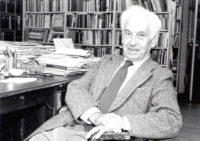 level of the higher categories.” Ernst Mayr (evolutionary biologist – pictured right), 1982
level of the higher categories.” Ernst Mayr (evolutionary biologist – pictured right), 1982
“The record jumps and all the evidence shows that the record is real: the gaps we see reflect real events in life’s history – not the artifact of a poor fossil record.” Niles Eldredge and Ian Tattersall, 1982
“The fossil record flatly fails to substantiate this expectation of finely graded change.” Niles Eldredge and Ian Tattersall, 1982
“A persistent problem in evolutionary biology has been the absence of intermediate forms in the fossil record. Long-term gradual transformations of single lineages are rare and generally involve simple size increase or trivial phenotypic effects. Typically, the record consists of successive ancestor-descendant lineages, morphologically invariant through time and unconnected by intermediates.” PG Williamson, 1982
“We are faced more with a great leap of faith . . . that gradual progressive adaptive change underlies the general pattern of evolutionary change we see in the rocks . . . than any hard evidence.” Niles Eldredge and Ian Tattersall, 1982
“The fossil record flatly fails to substantiate this expectation of finely graded change.” Niles Eldredge and Ian Tattersall, 1982
“Gaps in the fossil record – particularly those parts of it that are most needed for interpreting the course of evolution – are not surprising.” G Ledyard Stebbins, 1982
“… there are all sorts of gaps: absence of graduationally intermediate ‘transitional’ forms between species, but also between larger groups — between say, families of carnivores, or the orders of mammals. In fact, the higher up the Linnaean hierarchy you look, the fewer transitional forms there seem to be.” Niles Eldredge, 1982
“…there are no intermediate forms between finned and limbed creatures in the fossil collections of the world.” Gordon R Talor, 1983
“To explain discontinuities, Simpson relied, in part, upon the classical argument of an imperfect fossil record, but concluded that such an outstanding regularity could not be entirely artificial.” Stephen J Gould, 1983
The “potentially embarrassing features of the fossil record” is that there is “virtually no evidence of transition(s)” in the fossil record since the “majority of major groups appear suddenly in the rocks.” Douglas Futuyma, 1983
“We have so many gaps in the evolutionary history of life, gaps in such key areas as the origin of the multicellular organisms, the origin of the vertebrates, not to mention the origins of most invertebrate groups.” Chris McGowan, 1984
“He [Darwin] prophesied that future generations of paleontologists would fill in these gaps by diligent search….It has become abundantly clear that the fossil record will not confirm this part of Darwin’s predictions. Nor is the problem a miserably poor record. The fossil record simply shows that this prediction was wrong.” Niles Eldridge, 1984
“One must acknowledge that there are many, many gaps in the fossil record . . . There is no reason to think that all or most of these gaps will be bridged.” Michael Ruse (philosopher of science – pictured right), 1984
“I look skeptically upon diagrams that show a branching diversity of animal life through time, and come down at the base to a single kind of animal.” Harry Whittington, 1985
“Altogether the representatives of ten completely new invertebrate phyla were eventually recovered in the Burgess Shale, yet none of them turned out to be links between known phyla.” Michael Denton, 1985
“… absence of transitional forms is dramatically obvious.” Michael Denton, 1985
“The fragmentary nature of the fossil record prevents the paleontologist from using the taxonomic approach or any other method for calculating evolutionary rates in specific phyletic lines” Barbara Stahl, 1985
Paleontology “proffered a collective tacit acceptance of the story of gradual adaptive change, a story that strengthened and became even more entrenched as the synthesis took hold. We, paleontologists, have said that the history of life supports that interpretation, all the while really knowing that it does not.” Niles Eldredge, 1985
“Fossils have not only failed to yield the host of transitional form demanded by evolutionary theory, but because nearly all extinct species and groups revealed by paleontology are quite distinct and isolated as they burst into the record, then the number of hypothetical connecting links to join its diverse branches is necessarily greatly increased.” Michael Denton, 1985
burst into the record, then the number of hypothetical connecting links to join its diverse branches is necessarily greatly increased.” Michael Denton, 1985
“Each class at molecular level is unique, isolated, and unlinked by intermediates. Thus, molecules, like fossils, have failed to provide the elusive intermediates so long sought by evolutionary biology. Michael Denton (molecular biologist – pictured right), 1985
“Fossils have … failed to yield the host of transitional form demanded by evolutionary theory” and the “absence of transitional forms is dramatically obvious.” Michael Denton, 1985
“It has been the paleontologist, my own breed, who has been most responsible for letting ideas dominate reality.” Niles Eldredge, 1986
“Absence of the transitional fossils in the gaps between each group of fishes and its ancestor is repeated in standard treatises on vertebrate evolution…. This is one count in the creationists’ charge that can only evoke in unison from the paleontologists a plea of nolo contendere” Arthur Strahler, 1987
“Most major groups of animals appear abruptly in the fossil record, fully formed, and with no fossils yet discovered that form a transition from their parent group. Thus, it has seldom been possible to piece together ancestor-dependent sequences from the fossil record that show gradual, smooth transitions between species.” CP Hickman, 1988
“Indeed, it is the chief frustration of the fossil record that we do not have empirical evidence for sustained trends in the evolution of most complex morphological adaptations.” Stephen J Gould and Niles Eldredge, 1988
‘We have no intermediate fossils between rhipidistian fish and early amphibians.” Robert L Carroll, 1988
“Most families, orders, classes, and phyla appear rather suddenly in the fossil record, often without anatomically intermediate forms smoothly interlinking evolutionarily derived descendant taxa with their presumed ancestors.” Niles Eldredge, 1989
“Gaps between families and taxa of even higher rank could not be so easily explained as the mere artifacts of a poor fossil record.” Niles Eldredge, 1989
“The sweep of anatomical diversity reached a maximum right after the initial diversification of multicellular animals. The later history of life proceeded by elimination, not expansion.” Stephen J Gould, Harvard University, 1989
“The lack of ancestral or intermediate forms between fossil species is not a bizarre peculiarity of early metazoan history. Gaps are general and prevalent throughout the fossil record.” Rudolf A Raff (biologist – pictured right) and Thomas C. Kaufman (geneticist), 1991
record.” Rudolf A Raff (biologist – pictured right) and Thomas C. Kaufman (geneticist), 1991
“Gaps between higher taxonomic levels are general and large.” Rudolf A Raff and Thomas C Kaufman, 1991
“Paleontologists have long been aware of a seeming contradiction between Darwin’s postulate of gradualism … and the actual findings of paleontology. Following phyletic lines through time seemed to reveal only minimal gradual changes but no clear evidence for any change of a species into a different genus or for the gradual origin of an evolutionary novelty. Anything truly novel always seemed to appear quite abruptly in the fossil record.” Ernst Mayr, 1991
“The gaps in the fossil record are real, however. The absence of a record of any important branching is quite phenomenal. Species are usually static, or nearly so, for long periods, species seldom and genera never show evolution into new species or genera but replacement of one by another, and change is more or less abrupt.” Robert Wesson, 1991
“Despite these similarities, there is no evidence of any Paleozoic amphibians combining the characteristics that would be expected in a single common ancestor.” Edwin H Colbert, 1991
“No fossils are known that can be considered intermediate between these clearly aquatic [osteolepiform] fish and genera that are unequivocally classified as terrestrial vertebrates”
Robert L Carroll, 1992
“The fossil record has always been a problem.” Montgomery Slatkin, 1994
“There is only one source of direct evidence of the early history of life—the Precambrian fossil record; speculation made in the absence of such evidence, even by widely acclaimed evolutionists, has commonly proved groundless.” James W Schopf (paleontologist), 1994
“No wonder paleontologists shied away from evolution for so long. It never seemed to happen.” Niles Eldredge, 1995
“Fossils of each intermediate species appear fully distinct, persist unchanged, and then become extinct. Transitional forms are unknown.” Stephen J Gould, 1997
“No intermediate fossils between jawed and jawless forms have been found – early fossils of jawed fishes had jaws, teeth, scales, and spines. The origins of jaws and other structures that characterized the early gnathostomes are lost in the fossil record, belonging to some group about which we known nothing.” GS Helfman, BB Collette, and DE Facey (Diversity of Fishes), 1997
“Few fossils are yet known of plausible intermediates between the invertebrate phyla, and there is no evidence for the gradual evolution of the major features by which the individual phyla or classes are characterized.” Robert Carroll, 1997
“Progressive increase in knowledge of the fossil record over the past hundred years emphasizes how wrong Darwin was.” Robert Carroll, 1997
Species “appear in the fossil record as Athena did from the head of Zeus—full-grown and raring to go.” Jeffrey Schwartz (physical anthropologist – pictured right), 1999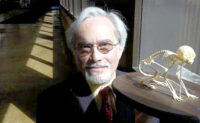
“Fossils may tell us many things, but one thing they can never disclose is whether they were ancestors of anything else.” Colin Patterson, 1999
“Given that evolution, according to Darwin, was in a continual state of motion …it followed logically that the fossil record should be rife with examples of transitional forms leading from the less to more evolved. …Instead of filling the gaps in the fossil record with so-called missing links, most paleontologists found themselves facing a situation in which there were only gaps in the fossil record, with no evidence of transformational evolutionary intermediates between documented fossil species.” Jeffrey H Schwartz, 1999
“As discussed earlier, the matter ultimately comes down to choosing between sparse protein data and uncertainties about the molecular clock on the one hand and an incomplete fossil record.” D J Crawford, 1999
“Palaeobiologists flocked to these scientific visions of a world in a constant state of flux and admixture. But instead of finding the slow, smooth, and progressive changes Lyell and Darwin had expected, they saw in the fossil records rapid bursts of change, new species appearing seemingly out of nowhere and then remaining unchanged for millions of years-patterns hauntingly reminiscent of creation.” M Pagel, 1999
“What is missing are the many intermediate forms hypothesized by Darwin, and the continual divergence of major lineages into the morphospace between distinct adaptive types.” Robert L Carroll (vertebrate paleontologist – pictured right), 2000
Robert L Carroll (vertebrate paleontologist – pictured right), 2000
“When we view Darwinian gradualism on a geological timescale, we may expect to find in the fossil record a long series of intermediate forms connecting phenotypes of ancestral and descendant populations. This predicted pattern is called phyletic gradualism. Darwin recognized that phyletic gradualism is not often revealed by the fossil record. Studies conducted since Darwin’s time likewise have failed to produce the continuous series of fossils predicted by phyletic gradualism. Is the theory of gradualism therefore refuted? Darwin and others claim that it is not, because the fossil record is too imperfect to preserve transitional series…Others have argued, however, that the abrupt origins and extinctions of species in the fossil record force us to conclude that phyletic gradualism is rare.” Cleveland Hickman, Larry Roberts, Susan Keen, Allan Larson, and David Eisenhour, 2000
“A number of contemporary biologists, however, favor various hypotheses of the punctuated equilibrium theory…They base their hypotheses on fossil records which have large “chains” of missing organisms. Although missing-link fossils are occasionally discovered, the record does little to support Darwin’s concept of gradual, long-term change…Others opposed to hypotheses of evolution through sudden change argue that because such a tiny percentage of organisms becomes fossilized…drawing definite conclusions from fossil evidence about evolution through either gradual or sudden change is not warranted.” Cleveland P Hickman, Larry Roberts, Susan Keen, Allan Larson, and David Eisenhour, 2000
‘The puzzle is the absence of fossils. Why have we not found traces of these lineages in their first tens or even hundreds of millions of years? It seems likely that the animals were too small or too rare, with the sudden appearance in the rocks corresponding to an increase in size and rise to ecological dominance.” Andy Purvis and Andy Hector, 2000
“With one exception, hardly any invertebrate chordates are known as fossils.” Cleveland Hickman, Larry Roberts, Allan Larson, and David Eisenhour, 20001
“Given the fact of evolution, one would expect the fossils to document a gradual steady change from ancestral forms to the descendants. But this is not what the paleontologist finds. Instead, he or she finds gaps in just about every phyletic series.” Ernst Mayr, 2001
“The long-term stasis, following a geologically abrupt origin, of most fossil morphospecies, has always been recognized by professional paleontologists” Stephen J Gould, 2002
“People and advertising copywriters tend to see human evolution as a line stretching from apes to man, into which one can fit new-found fossils as easily as links in a chain. Even modern anthropologists fall into this trap . . . [W]e tend to look at those few tips of the bush we know about, connect them with lines, and make them into a linear sequence of ancestors and descendants that never was. But it should now be quite plain that the very idea of the missing link, always shaky, is now completely untenable.” Henry Gee, 2002
“Given the fact of evolution, one would expect the fossils to document a gradual steady change from ancestral forms to the descendants. But this is not what the paleontologist finds. Instead, he or she finds gaps in just about every phyletic series.” Ernst Mayr, 2001
“Not having any fossils that can serve as missing links, we have to fall back on the time-honored method of historical science, the construction of a historical narrative.” Ernst Mayr, 2004
“The cases in point include the origin of complex RNA molecules and protein folds; major groups of viruses; archaea and bacteria, and the principal lineages within each of these prokaryotic domains; eukaryotic supergroups; and animal phyla. In each of these pivotal nexuses in life’s history, the principal ‘types’ seem to appear rapidly and fully equipped with the signature features of the respective new level of biological organization. No intermediate ‘grades’ or intermediate forms between different types are detectable.” Eugene Koonin, 2007
“The fossil record doesn’t tell us much: The earliest fossils that have been proposed to be eukaryotes are only about 2 billion years old, and paleontologists have not yet discovered any transitional forms.” Carl Zimmer, 2009
“I wish we did have a complete and unbroken trail of fossils, a cinematic record of all evolutionary change as it happened.” Richard Dawkins, 2009
“We need more fossils.” Richard Dawkins, 2009
 “About 80% of all known fossils are marine animals, mostly various types of fish. Yet there is no evidence of intermediate forms. The most common explanation for the total lack of fossil evidence for fish evolution is that few transitional fossils have been preserved. This is an incorrect conclusion because every major fish kind known today has been found in the fossil record, indicating the completeness of the existing known fossil record.” Jerry Bergman, 2011
“About 80% of all known fossils are marine animals, mostly various types of fish. Yet there is no evidence of intermediate forms. The most common explanation for the total lack of fossil evidence for fish evolution is that few transitional fossils have been preserved. This is an incorrect conclusion because every major fish kind known today has been found in the fossil record, indicating the completeness of the existing known fossil record.” Jerry Bergman, 2011
“The general lack of transitional forms between species in the fossil record is a constant theme in evolutionary biology.” Eugene V Koonin (Senior Investigator at the National Center for Biotechnology Information – pictured right), 2011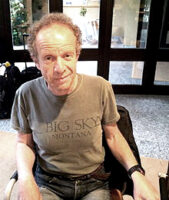
“Gould and Eldridge collected extensive evidence indicating that the history of the great majority of animal species, as reflected in the fossil record, represents mostly stasis−that is the virtual lack of change.” Eugene V Koonin, 2011
“There are so many different scenarios for how life got going and they all involve molecules that don’t get fossilized. It’s a clear limit.” Jerry Coyne, 2011
“When do we see the introduction of evolutionary novelty, it usually shows up with a bang, and often with no firm evidence that the organism did not evolve elsewhere.” James Le Lanu, 2012
“The main reason for paleontologists’ loss of faith in the orthodox evolutionary doctrine was the realization that the most notable features of the fossil record is that most of the time nothing happens.” James Le Lanu, 2012
“This ‘stasis’ clearly contradicts Darwin’s supposition if a continuous process of gradualistic transformation” James Le Lanu, 2012
”Evidence for these theories [origin of life] come, of course, not from the fossil record but from inferences based on biochemical comparisons of living forms.” Eugenie Scott, 2013
”… the fossil evidence currently does not illuminate links among most of the basic vertebrate groups.” Eugenie Scott, 2013
“Evolutionary biologists and antievolutionists are united in one respect: both agree that there are gaps in the fossil record. The record of life as seen in stone does not present a smooth, intergrading continuum from earliest times until the present, nor is there a continuum of variation of form between all living things.” Eugenie Scott, 2013
“Why… does the fossil record always happen to be incomplete at the nodes connecting major branches of Darwin’s tree of life, but rarely−in the parlance of modern paleontology−at the terminal branches” Stephen C Meyer (philosophy of science – pictured right), 2013
“Of course, the fossil record does not show an overall increase in the complexity of organisms from Precambrian to Cambrian times, as Darwin expected.” Stephen C Meyer, 2013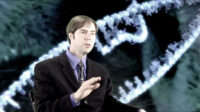
“As more and more fossil discoveries fall within existing higher taxonomic groups…, and as they fail to document the rainbow of intermediate forms expected in the Darwinian view of life, it grows ever more improbable that the absence of intermediate forms reflects sampling bias−that is, an ‘artifact’ of either incomplete sampling or preservation.” Stephen C Meyer, 2013
“The problem is that the fossil record isn’t always obliging when it comes to direct evidence.” Brian Switek. 2014.
Fossil Record by the Decade is a subcategory of the Fossil Record
More
Subcategories of the Fossil Record include –
-
- Darwin’s Dilemma
- Dating Fossils
- Fossil Record by the Decade (current page)
Darwin Then and Now is an educational resource on the intersection of evolution and science, highlighting the ongoing challenges to the theory of evolution.
Move On
Explore how to understand twenty-first-century concepts of evolution further using the following links –
-
- The Understanding Evolution category showcases how varying historical study approaches to evolution have led to varying conclusions. Subcategories include –
- Studying Evolution explains how key evolution terms and concepts have changed since the 1958 publication of The Origin of Species.
- What is Science explains Charles Darwin’s approach to science and how modern science approaches can be applied for different investigative purposes.
- Evolution and Science feature study articles on how scientific evidence influences the current understanding of evolution.
- Theory and Consensus feature articles on the historical timelines of the theory and Natural Selection.
- The Biography of Charles Darwin category showcases relevant aspects of his life.
- The Glossary defines terms used in studying the theory of biological evolution.
- The Understanding Evolution category showcases how varying historical study approaches to evolution have led to varying conclusions. Subcategories include –








